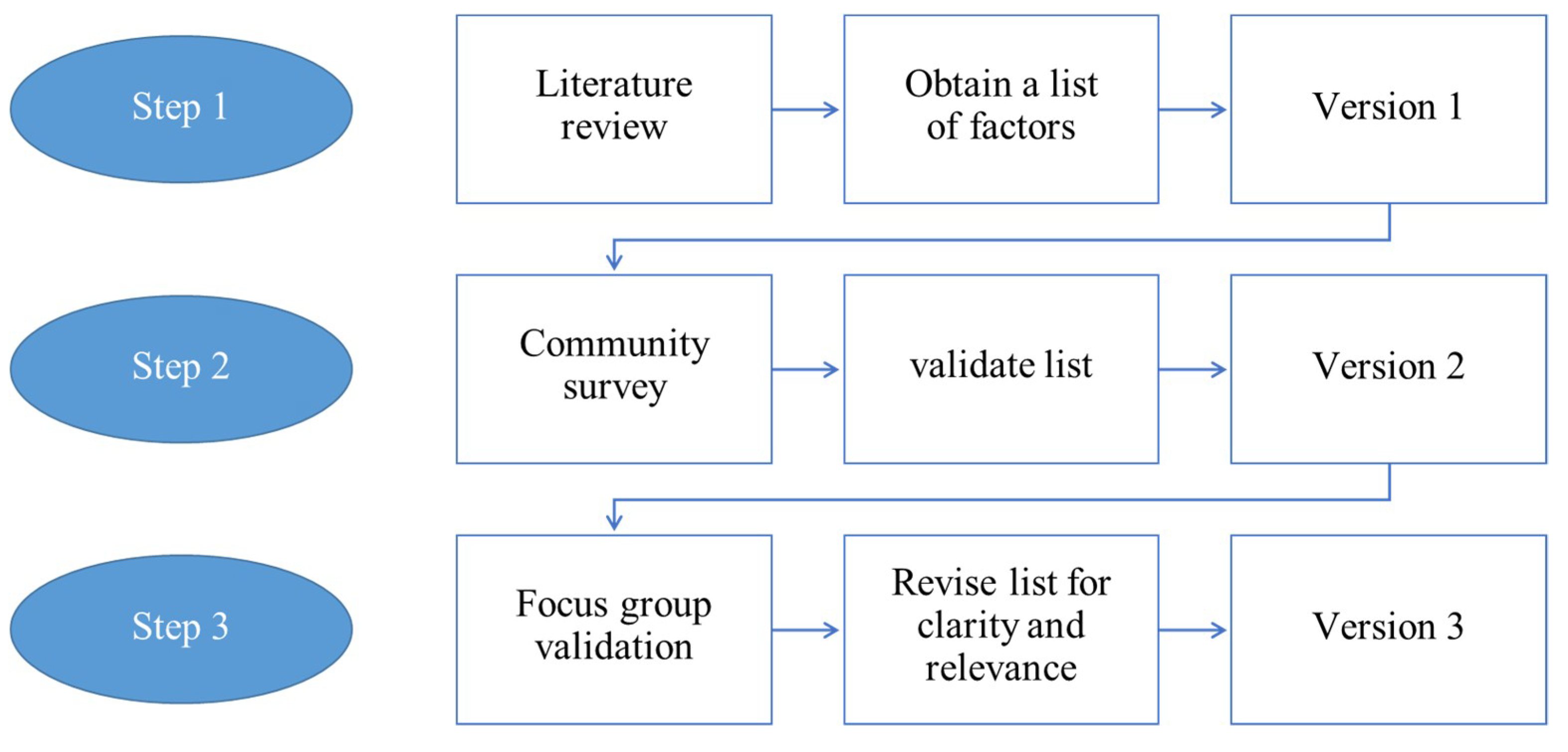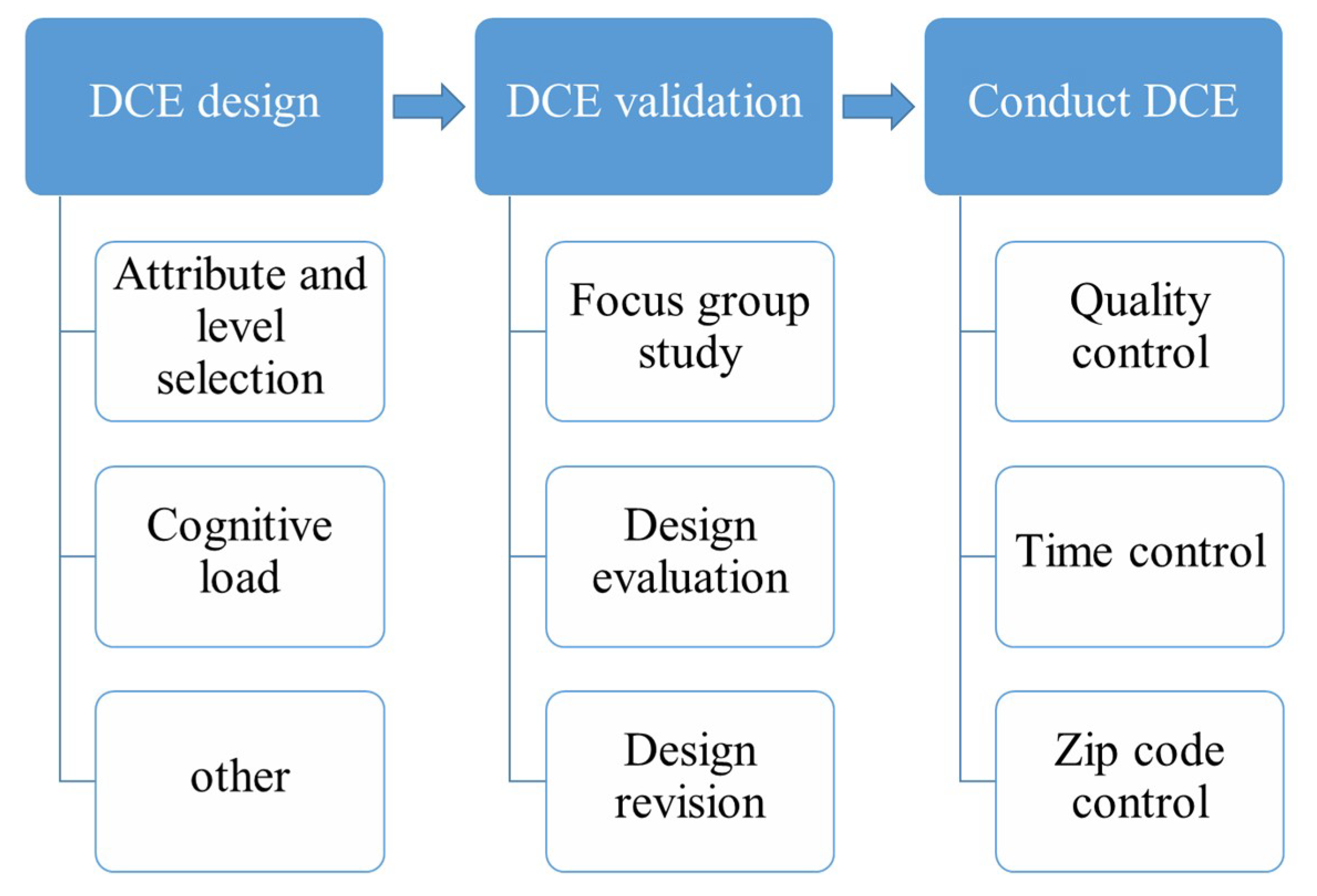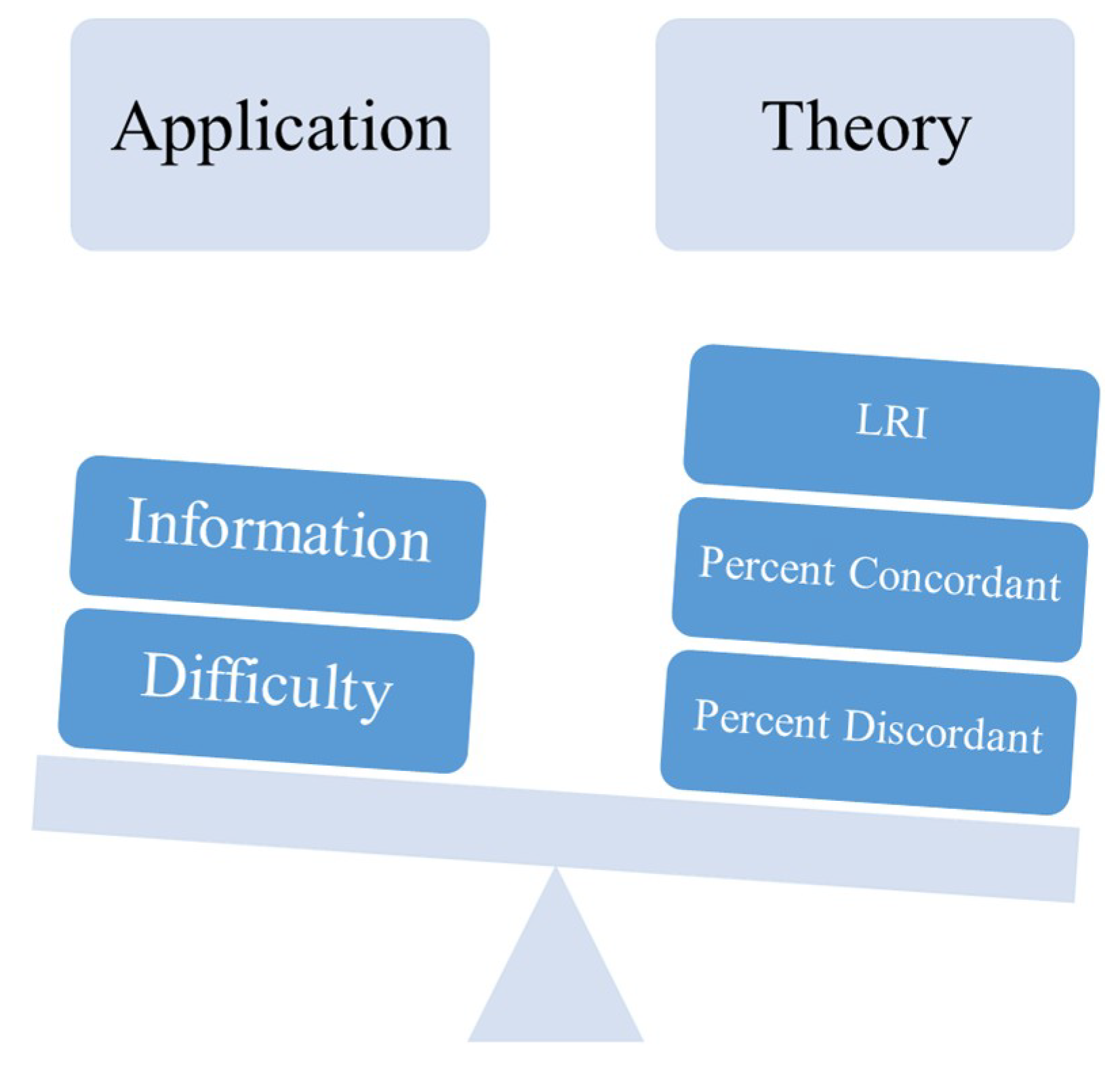Corporate Social Responsibility: Understanding the Mining Stakeholder with a Case Study
Abstract
:1. Introduction
2. The Framework for Mining Community Engagement
3. Challenges and Methods in the Developed Framework
3.1. How to Identify and Verify the Important Factors
3.2. How to Design Good Discrete Choice Experiments (DCEs) and Conduct Survey
3.3. How to Find the Best DCM for Mining Community Engagement
4. A Case Study
5. Conclusions
Author Contributions
Funding
Conflicts of Interest
References
- Kuhn, A. In Indonesia, Anger Against Mining Giant Grows. Available online: https://www.npr.org/2011/11/16/142346962/in-indonesia-anger-against-mining-giant-grows (accessed on 22 November 2018).
- O’Faircheallaigh, C. Government and Business in Volatile Times. In Corporate Social Responsibility; Acker, E.V., Curran, G., Eds.; Pearson: Sydney, Australia, 2013. [Google Scholar]
- Owen, J.R.; Kemp, D. Social licence and mining: A critical perspective. Resour. Policy 2013, 38, 29–35. [Google Scholar] [CrossRef]
- Pactwaa, K.; Woźniaka, J.; Strempskib, A. Sustainable mining—Challenge of Polish mines. Resour. Policy 2018. [Google Scholar] [CrossRef]
- Curran, G. Social licence, corporate social responsibility and coal seam gas: framing the new political dynamics of contestation. Energy Policy 2017, 101, 427–435. [Google Scholar] [CrossRef]
- Woźniak, J. The Role and Implementation of the Concept of Social Responsibility in the Functioning of Mining and Energy Industry; Geoengineering, Mining and Geology Wrocław University of Science and Technology: Wrocław, Poland, 2019. (In Polish) [Google Scholar]
- Mason, R.; Mitroff, I. Challenging Strategic Planning Assumptions; John Wiley & Sons: New York, NY, USA, 1981. [Google Scholar]
- Crosby, B. Stakeholder Analysis: A Vital Tool for Strategic Managers; USAID: Washington, DC, USA, 1992.
- Walt, G. Can Interest Groups Influence Government Policy? Health Policy: An Introduction to Process and Power; Zed Publications: London, UK, 1994. [Google Scholar]
- Que, S.; Wang, L.; Awuah-Offei, K.; Chen, Y.; Yang, W. The Status of the Local Community in Mining Sustainable Development beyond the Triple Bottom Line. Sustainability 2018, 10, 1749. [Google Scholar] [CrossRef]
- McFadden, D. Conditional Logit Analysis of Qualitative Choice Behavior; Frontiers in Econometrics: New York, NY, USA, 1974. [Google Scholar]
- Walekhwa, P.N.; Mugisha, J.; Drake, L. Biogas energy from family-sized digesters in Uganda: Critical factors and policy implications. Energy Policy 2009, 37, 2754–2762. [Google Scholar] [CrossRef]
- Willis, K.; Scarpa, R.; Gilroy, R.; Hamza, N. Renewable energy adoption in an ageing population: Heterogeneity in preferences for micro-generation technology adoption. Energy Policy 2011, 39, 6021–6029. [Google Scholar] [CrossRef]
- Winslott Hiselius, L. Using choice experiments to assess people’s preferences for railway transports of hazardous materials. Risk Anal. 2005, 25, 1199–1214. [Google Scholar] [CrossRef]
- Dimitropoulos, A.; Kontoleon, A. Assessing the determinants of local acceptability of wind-farm investment: A choice experiment in the Greek Aegean Islands. Energy Policy 2009, 37, 1842–1854. [Google Scholar] [CrossRef]
- StatWizards LLC. Discrete Choice Models; StatWizards LLC: Coronado, CA, USA, 2016. [Google Scholar]
- Que, S. Describing Local Community Acceptance with Discrete Choice Theory for Enhanced Community Engagement. Doctoral Dissertations, Missouri University of Science and Technology, Rolla, MO, USA, 2015. [Google Scholar]
- Ivanova, G.; Rolfe, J.; Lockie, S.; Timmer, V. Assessing social and economic impacts associated with changes in the coal mining industry in the Bowen Basin, Queensland, Australia. Manag. Environ. Qual. An Int. J. 2007, 18, 211–228. [Google Scholar] [CrossRef]
- Ivanova, G.; Rolfe, J. Assessing development options in mining communities using stated preference techniques. Resour. Policy 2011, 36, 255–264. [Google Scholar] [CrossRef]
- Que, S.; Awuah-Offei, K.; Wang, L.; Samaranayake, V.A.; Weidner, N.; Yuan, S. Individual preferences for mineral resource development:Perspectives from an urban population in the United States. J. Clean. Prod. 2018, 189, 30–39. [Google Scholar] [CrossRef]
- Que, S.; Awuah-Offei, K.; Samaranayake, V.A. Classifying critical factors that influence community acceptance of mining projects for discrete choice experiments in the United States. J. Clean. Prod. 2015, 87, 489–500. [Google Scholar] [CrossRef]
- Ryan, M.; Gerard, K. Using discrete choice experiments to value health care: Current practice and future prospects. Appl. Heal. Econ. Policy Anal. 2003, 2, 55–64. [Google Scholar]
- Train, K. Discrete Choice Methods with Simulation; Cambridge University: Cambridge, UK, 2002. [Google Scholar]
- Caussade, S.; Ortúzar, J.D.D.; Rizzi, L.I.; Hensher, D.A. Assessing the influence of design dimensions on stated choice experiment estimates. Transp. Res. Part B Methodol. 2005, 39, 621–640. [Google Scholar] [CrossRef]
- Hoyos, D. The State of the Art of Environmental Valuation with Discrete Choice Experiments. Ecol. Econ. 2010, 69, 1595–1603. [Google Scholar] [CrossRef]
- Que, S.; Awuah-Offei, K.; Weidner, N.; Wang, Y. Discrete choice experiment validation: A resource project case study. J. Choice Model. 2017, 22, 39–50. [Google Scholar] [CrossRef]
- Mcfadden, D.; Train, K. Mixed MNL models for discrete response. J. Appl. Econom. 2000, 15, 447–470. [Google Scholar] [CrossRef] [Green Version]
- Que, S.; Awuah-Offei, K. Framework for mining community consultation based on discrete choice theory. Int. J. Min. Miner. Eng. 2014, 5, 59–74. [Google Scholar] [CrossRef]
- Revelt, D.; Train, K. Mixed Logit with Repeated Choices: Households’ Choices of Appliance Efficiency Level. Rev. Econ. Stat. 1998, 80, 647–657. [Google Scholar] [CrossRef]
- ICMM. Mining’ s Contribution to Sustainable Development—An Overview Mining’ s Contribution to Sustainable Development; ICMM: London, UK, 2012. [Google Scholar]
- IFC. Good Practice note: Addressing Grievances from Project-Affected Communities; IFC: Washington DC, USA, 2009. [Google Scholar]
- Lockie, S.; Franettovich, M.; Petkova-Timmer, V.; Rolfe, J.; Ivanova, G. Coal mining and the resource community cycle: A longitudinal assessment of the social impacts of the Coppabella coal mine. Environ. Impact Assess. Rev. 2009, 29, 330–339. [Google Scholar] [CrossRef]
- Petkova, V.; Lockie, S.; Rolfe, J.; Ivanova, G. Mining developments and social impacts on communities: Bowen Basin case studies. Rural Soc. 2009, 19, 211–228. [Google Scholar] [CrossRef]
- ICMM; ICRC; IFC; IPIECA. Voluntary Principles on Security and Human Rights: Implementation Guidance Tools; ICMM: London, UK; ICRC: Geneva, Switzerland; IFC: Washington DC, USA; IPIECA: London, UK, 2011. [Google Scholar]
- Muradian, R.; Martinez-Alier, J.; Correa, H. International capital versus local population: The environmental conflict of the Tambogrande mining project, Peru. Soc. Nat. Resour. 2003, 16, 775–792. [Google Scholar] [CrossRef]
- ICMM. Good Practice Guide: Indigenous Peoples and Mining; ICMM: London, UK, 2010. [Google Scholar]
- Dudka, S.; Adriano, D.C. Environmental Impacts of Metal Ore Mining and Processing: A Review. J. Environ. Qual. 1997, 26, 590. [Google Scholar] [CrossRef]




| Economic | Social | Demographic Factors |
|---|---|---|
| Job opportunities [30,31] | Population increase [30,32] | Age |
| Income increase [19,33] | Infrastructure improvement [30,33] | Gender |
| Increase in housing costs [19,33] | Traffic increase [32,34] | Household income |
| Labor shortage for other businesses [33] | Crime increase [32,34] | Education |
| Environmental | Governance and others | |
| Noise pollution [33,34] | Permit approval decision making mechanism [35] | |
| Water pollution [19,36] | Availability of independent and transparent information on potential impacts of mine [30,35] | |
| Air pollution [34,37] | Mine buffer [19] | |
| Land pollution [33,37] | Mine life [13] |
| A New Mine Will Be Opened Near Salt Lake. Carefully Consider Each of the Following Options. Suppose All Other Unknown Conditions/Characteristics Are the Same, Which Option Would You Choose? | ||||
|---|---|---|---|---|
| Job Opportunities | Water Pollution | Permit Approval Decision Making Mechanism | Population Increase | |
| Option A | 600 people employed directly by the mine | Same as similar mine in the area | Final decision by Government agency after significant public input | 4% annually |
| Option B | 300 people employed directly by the mine | Same as similar mine in the area | Final decision by Government agency after negotiating with local representatives | 2% annually |
| Option C | 900 people employed directly by the mine | Less than similar mine in the area | Final decision by Government agency after significant public input | 6% annually |
| Model | LRI | Percent Concordant | Percent Discordant | Percent Tied |
|---|---|---|---|---|
| CL model | 0.2687 | 73.3% | 23.5% | 3.2% |
| CLQ model | 0.2696 | 78.5% | 18.7% | 2.8% |
| ML model | 0.3127 | X | X | X |
| Factors | CLQ-Coefficient | P-Value | WTP $/Month |
|---|---|---|---|
| Positive Factors | |||
| Job opportunities | 1.3886 | <0.0001 | 221 |
| Availability of independence and transparency information on potential impacts of mine | 1.2606 | <0.0001 | 201 |
| Income increase | 1.2541 | <0.0001 | 200 |
| Mine buffer | 1.2141 | <0.0001 | 194 |
| Infrastructure improvement | 1.1575 | <0.0001 | 185 |
| Permit approval decision making mechanism | 0.2028 | <0.0001 | 32 |
| Mine life | 0.1402 | 0.0023 | 22 |
| Negative Factors | |||
| Air pollution | −1.8216 | <0.0001 | −291 |
| Increase in housing costs | −1.7527 | <0.0001 | −280 |
| Crime increase | −1.6939 | <0.0001 | −270 |
| Noise pollution | −1.6794 | <0.0001 | −268 |
| Water pollution | −0.3471 | <0.0001 | −55 |
| Land pollution | −0.2707 | <0.0001 | −43 |
| Population increase | −0.2570 | <0.0001 | −41 |
| Traffic increase | −0.1742 | 0.0001 | −28 |
| Labor shortage for other businesses | −0.1117 | 0.0157 | −18 |
| Demographic factor | |||
| Age | 0.0028 | 0.0852 | |
| Household income | 0.0021 | 0.0775 | |
| Education | 0.0017 | 0.0905 | |
| Gender | −0.0093 | 0.0928 |
© 2019 by the authors. Licensee MDPI, Basel, Switzerland. This article is an open access article distributed under the terms and conditions of the Creative Commons Attribution (CC BY) license (http://creativecommons.org/licenses/by/4.0/).
Share and Cite
Que, S.; Wang, L.; Awuah-Offei, K.; Yang, W.; Jiang, H. Corporate Social Responsibility: Understanding the Mining Stakeholder with a Case Study. Sustainability 2019, 11, 2407. https://doi.org/10.3390/su11082407
Que S, Wang L, Awuah-Offei K, Yang W, Jiang H. Corporate Social Responsibility: Understanding the Mining Stakeholder with a Case Study. Sustainability. 2019; 11(8):2407. https://doi.org/10.3390/su11082407
Chicago/Turabian StyleQue, Sisi, Liang Wang, Kwame Awuah-Offei, Wei Yang, and Hui Jiang. 2019. "Corporate Social Responsibility: Understanding the Mining Stakeholder with a Case Study" Sustainability 11, no. 8: 2407. https://doi.org/10.3390/su11082407





